Amphibians
Having permeable skin is a significant barrier to oceanic colonization. The relative lack of permanent freshwater bodies on St. Martin also makes it a difficult place for amphibians. Not surprisingly, there are only a few species of amphibian on St. Martin.
There are three species of frog on the island which I have seen. The coqui antillano (Eleutherodactylus johnstonei) is a whistling frog, and it is possible that a similar species, E. martinicensis has also been recently introduced. The two-striped treefrog (Scinax rubra) is a slightly larger treefrog that was probably introduced but has been on the island for decades. The Cuban treefrog (Osteopilus septentrionalis) is much larger and seems to have been introduced quite recently. In general, all the frogs are more easily heard than seen.
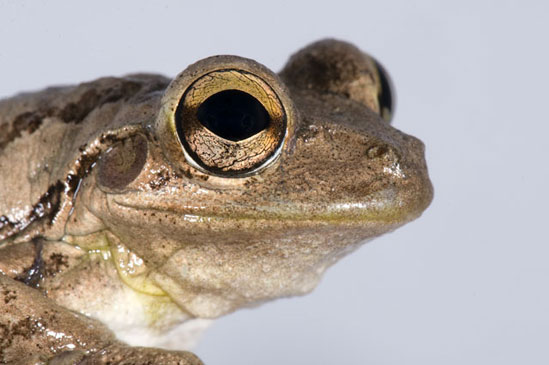
This specimen of the Cuban treefrog was apprehended at the Marigot gendarmerie, where it was hunting inside the office. A single dropping made while under our supervision indicated that it had recently eaten a large cockroach.
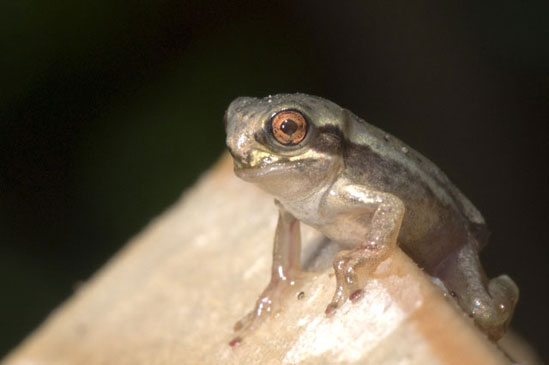
This two-striped treefrog grew up with hundreds of others in an unused swimming pool in Cul de Sac. Its facial deformities may be the result of pollution, or perhaps just the pressure of trying to mature quickly with hundreds of cannibalistic siblings.
Coqui Antillano (Eleutherodactylus johnstonei)
Several species from this family are naturally occurring in the Lesser Antilles, with one species living on St. Martin. This small frog is heard more often than seen, but does seem to be locally common in hospitable areas. Although not a true treefrog, it is typically arboreal. The maximum adult size is less than four cm SVL. This species lays clusters of relatively large eggs covered in mucus which hatch directly into small froglets, bypassing the tadpole stage. This frog is also known as Johnstone’s whistling frog.
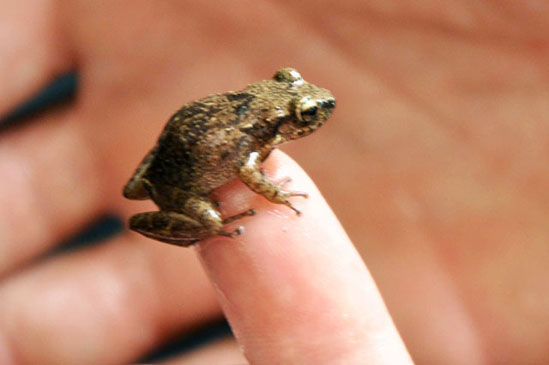
In this photo of an adult coqui, the v-shaped mark above the shoulders is clearly visible. (Photo by M.A.)
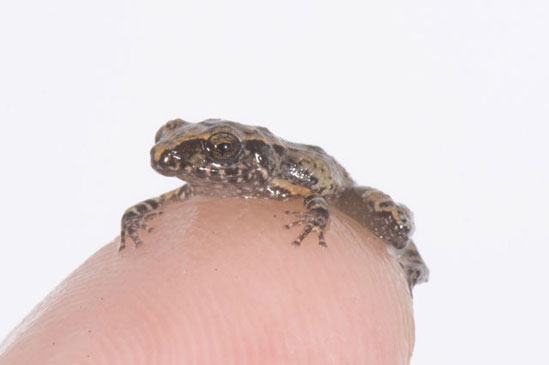
Immature coqui may be very small, since they emerge from their eggs as tiny froglets.
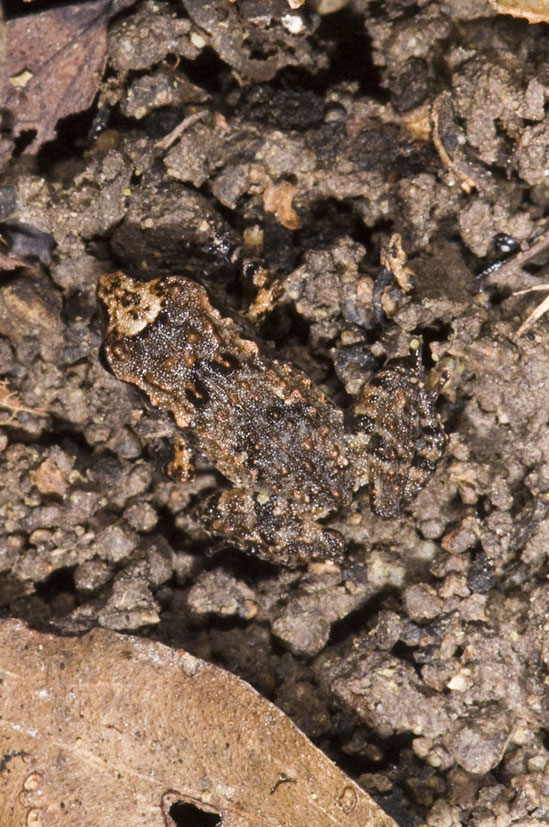
This juvenile blends into his environment remarkably well. He was seen on Pic Paradis, hopping around the leaf litter on the forest floor.
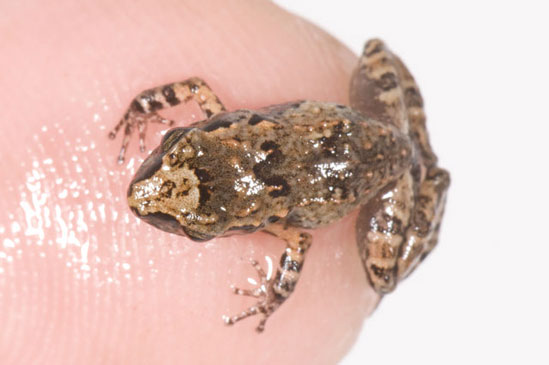
Compared to the other frogs on the island, the coqui is generally darker and has more distinct markings, although all species seem to be somewhat variable and capable of changing color depending on their mood.
Two-striped Treefrog (Scinax rubra)
This species of South American treefrog is thought to be introduced by man, and only one species from this family is present in the Lesser Antilles. It is larger than the coqui antillano.
Tadpoles of this species are easily found in most puddles and other freshwater bodies, although they seem relatively rare in the roadside ditches that are home to guppies. In developed areas, anthropogenic rainwater caches (such as abandoned swimming pools) serve as breeding locations.
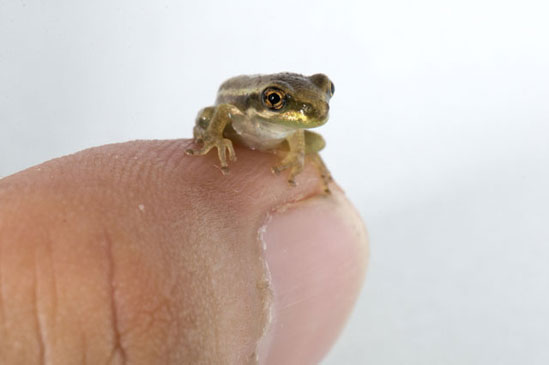
This two-striped tree frog has recently transformed from a tadpole. A full-sized adult can be several times larger.

The most distinctive feature of this species are the light lines running down each side of the body. The back varies from dark brown to shiny gold.
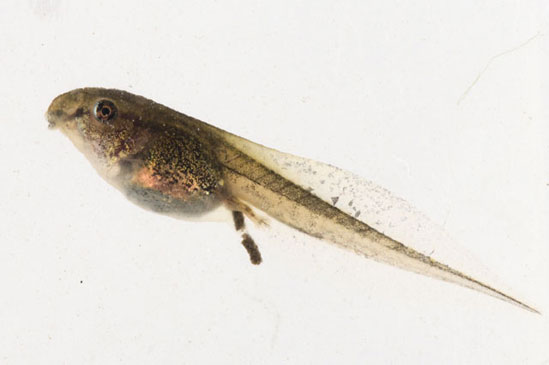
The tadpoles of this species are brown but may look black, particularly in poor lighting or dirty water. As they mature, they become cannibalistic. Tiny hind legs are visible.
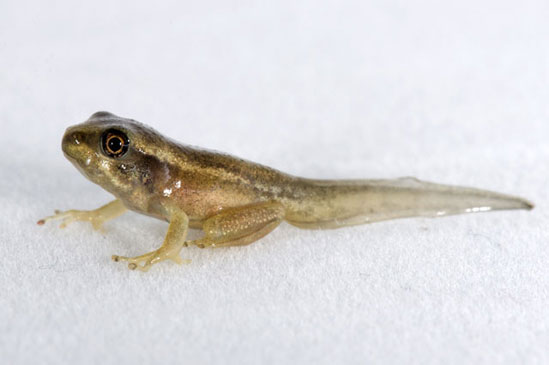
This individual is transitioning into a frog. While their hind legs are visible for some time, once their front legs come out (after developing under the skin), the transformation to a frog takes only a couple days.

This young frog is absorbing the last of his tail, but his facial structure and coloration are not yet fully developed.
Cuban Treefrog (Osteopilus septentrionalis)
The Cuban treefrog is a relatively recent introduction to the island, and is several times larger than the other frogs, six to twelve centimeters in length. A notorious stowaway, it has been introduced accidentally to many islands in the Caribbean.
They are known to be voracious eaters, and it is probable that the other frogs on the island make up a good part of their diet, along with insects and other small animals.
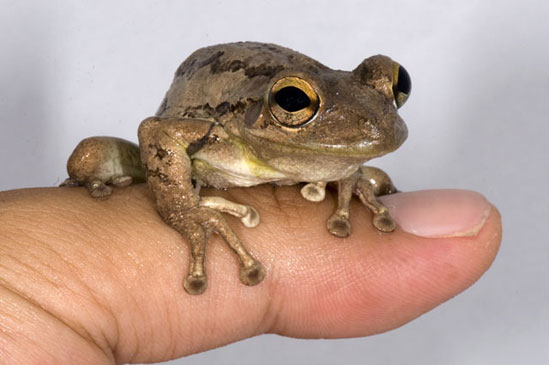
The Cuban tree frog has very large toe pads, and the skin over its skull is fused to the skull to reduce moisture loss.
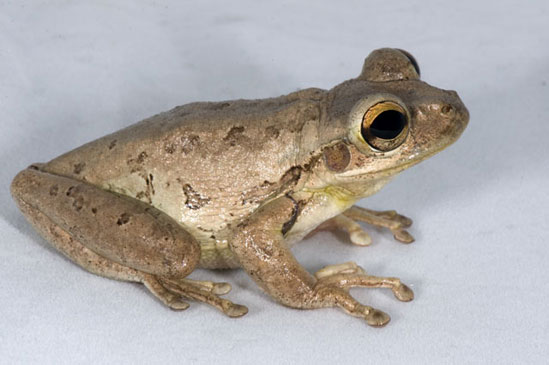
This frog often has two dark stripes down its back, but these are not always visible, or may be broken into a series of splotches. The areas in the folds of the legs are often bright yellow.
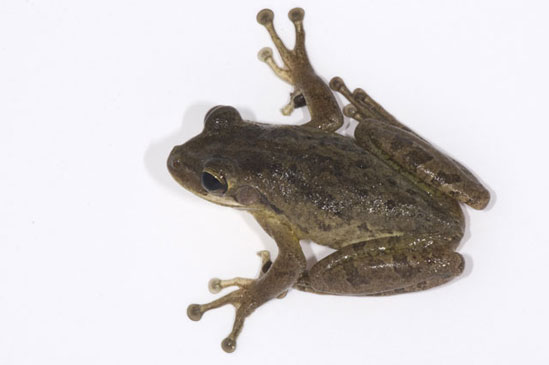
Males have dark, callus-like patches on their thumbs which help them grip the female during sex.
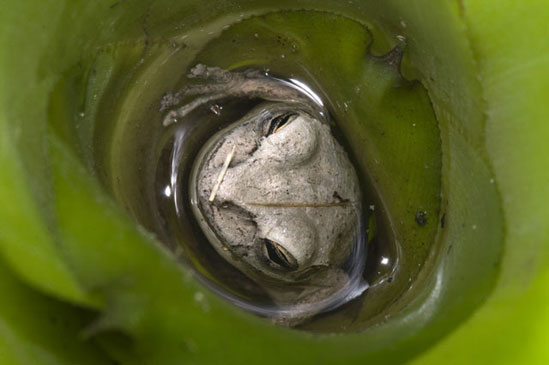
During the day, I found many Cuban treefrogs sleeping in the small pools of water held by bromeliads. When inactive, they were often almost white.
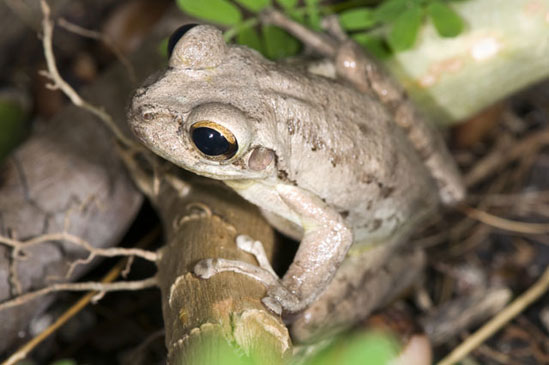
After his photo shoot, this Cuban treefrog was released. Although they are an invasive species, the fate of a single individual is probably insignificant to their ability to remain established on the island.
